The Economics and Statistics Division maintains archives of previous publications for accountability purposes, but makes no updates to keep these documents current with the latest data revisions from Statistics Canada. As a result, information in older documents may not be accurate. Please exercise caution when referring to older documents. For the latest information and historical data, please contact the individual listed to the right.
<--- Return to Archive
For additional information relating to this article, please contact:
January 05, 2018US EMPLOYMENT, DECEMBER AND ANNUAL 2017 The US Bureau of Labor Statistics reported a gain of 148,000 positions in non-farm payroll employment for December. This follows on the revised gain of 252,000 in November. The total gain in non-farm payroll employment was 2.1 million and employment in the US was 1.5 per cent higher in 2017 than in 2016.
Significant employment gains were concentrated in health care (+31,000), construction (+30,000), manufacturing (+25,000), with more marginal gains in food services/drinking places (+25,000) and professional/business services (+19,000). There was a modest decline in retail employment (-20,000) and little change in mining, wholesale trade, transportation, information, finance and government.
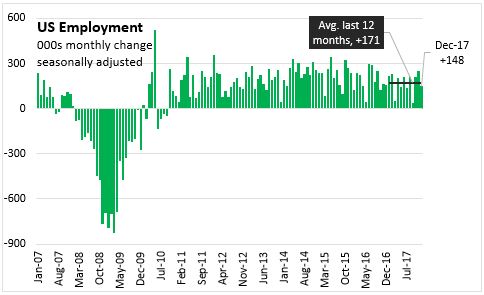
The US unemployment rate held steady at 4.1 per cent - below pre-recession levels. The annual average of unemployment was 4.4 per cent in 2017, continuing a steady decline since peaking at an annual average of 9.6 per cent in 2010.
Like in the US, Canada's unemployment rates are falling below pre-recession levels. Canadian unemployment rates are now at their lowest levels since the start of the labour force survey in 1976.
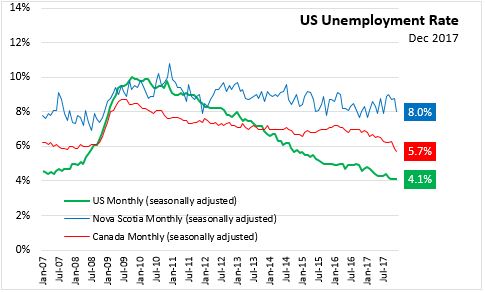
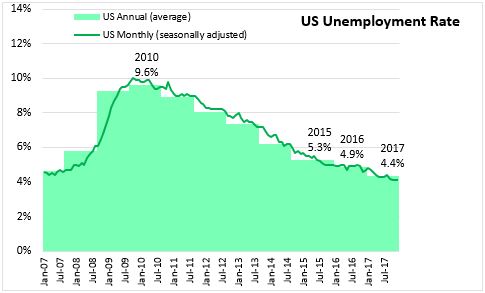
Although the US unemployment rate is reaching historic lows, the participation rate held steady at 62.7 per cent in December, bringing the 2017 annual average to 62.8 per cent. Unlike unemployment rates, the US participation rate has failed to return to pre-recession levels and has only increased modestly since bottoming out in 2015.
Participation rates in Canada and Nova Scotia also declined in the years after the global financial crises, but have been rising somewhat in recent months.
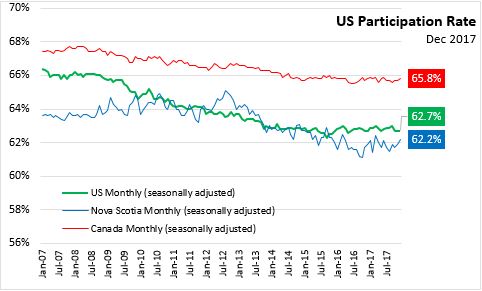
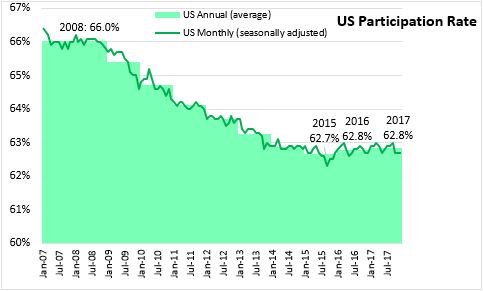
Although employment levels are rising in the US, the employment to population level is down to 60.1 per cent in December. The annual average employment rate has been trending up since a trough in 2011, but at 60.1 per cent for 2017, the US employment rate is still below the pre-recession level.
Employment rates in Canada have been trending up over the last 18 months, but are still below levels observed in 2008. With an aging population and declining labour supply, Nova Scotia's employment rates have trended down since 2012, but there has been some recovery in recent months.
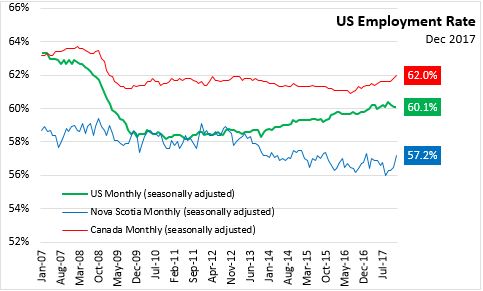

Note: NS and US labour force statistics refer to different working-age cohorts.
Source: US Bureau of Labor Statistics, Statistics Canada CANSIM table 282-0087
<--- Return to Archive